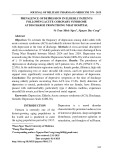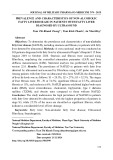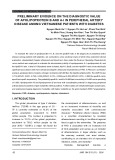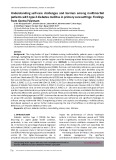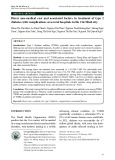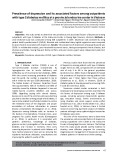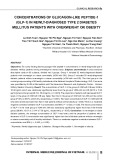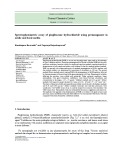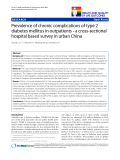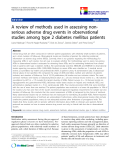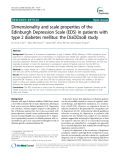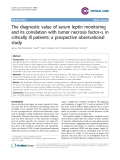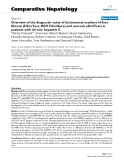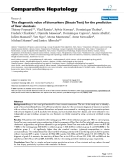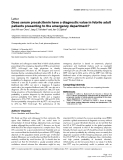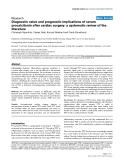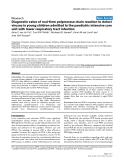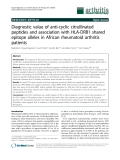
62
JOURNAL OF MEDICAL RESEARCH
JMR 184 E15 (11) - 2024
Corresponding author: Nguyen Manh Ha
Vietnam National Endocrinology Hospital
Email: manhhanoitiet@gmail.com
Received: 10/06/2024
Accepted: 02/07/2024
I. INTRODUCTION
PRELIMINARY EVIDENCE ON THE DIAGNOSTIC VALUE
OF APOLIPOPROTEIN B AND A-I IN PERIPHERAL ARTERY
DISEASE AMONG VIETNAMESE PATIENTS WITH DIABETES
Nguyen Manh Ha1,, Nguyen Thi Ho Lan1, Pham Thai Binh1
Vu Minh Phuc1, Hoang Van Kien1, Tran Thi Nhu Quynh1
Nguyen Thi Nhu Quynh1, Nguyen Thi Giang1
Nguyen Thi Thu1, Nguyen Thi Minh Thu1, Nguyen Ngoc Mai1
Nguyen Thi Ngoc Hoa1, Dinh Thi Thu Huong2
1Vietnam National Endocrinology Hospital
2Hanoi Medical University
To evaluate the value of apolipoprotein A-I, B, and the apoB/AI ratio in the diagnostic of peripheral artery
disease among patients with diabetes, we conducted a cross-sectional study of which they underwent clinical
evaluation, standardized Doppler ultrasound and blood test. Area under the Receiver Operating Characteristic
curve method was employed to estimate the discriminatory ability of apolipoprotein A-I, apolipoprotein B, and
the ApoB/A-I ratio. A total of 159 patients were included. ApoA-I, ApoB, and the ApoB/A-I ratio show statistically
significant associations with most clinical and Doppler ultrasound characteristics of PAD. In Pearson’s correlation
analysis, apolipoproteins showed a stronger correlation with ABI than the traditional lipid profile. The AUROC was
0.714 (95%CI: 0.635 - 0.794); 0.300 (95%CI: 0.219 – 0.380) and 0.604 (95%CI: 0.516 – 0.692) for apoB/A-I ratio;
apoAI and apoB, respectively. The probability apoB/A-I cutoff of 0.666 had a sensitivity of 0.682 and a specificity
of 0.662. Apolipoprotein AI and Apolipoprotein B are tests with considerable potential in diagnosing peripheral
arterial disease in patients of type 2 diabetes mellitus patients. Further studies are needed with larger sample sizes,
and employing imaging diagnostic modalities with higher reliability as the gold standard (MSCT angiography).
Keywords: PAD, diabetes, apolipoprotein, doppler, cholesterol.
The global prevalence of type 2 diabetes
mellitus (T2DM) in the age group of 20 -
79 is currently estimated at 10.5% of the
global population, equivalent to 536.6
million people. This number is projected to
increase to 12.2% of the global population,
equivalent to 783.2 million people by the
year 2045.1 T2DM is a major risk factor for
the development of atherosclerosis, as well
as an increased incidence of disability and
mortality associated with cardiovascular
diseases.2 Peripheral arterial disease (PAD)
is a condition characterized by localized
atherosclerosis resulting in insufficient regional
blood supply to the extremities. The presence
of PAD is associated with an increased risk
of limb amputation and serves as an indicator
of atherosclerosis in larger arteries such as
the coronary, cerebral, and renal arteries,
contributing to an elevated risk of myocardial
infarction, stroke, and mortality.3
Diabetes management requires a





